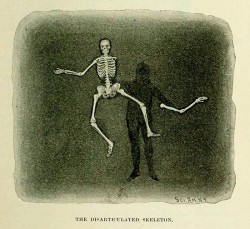How can records managers support access and provide context in an age where people and systems create and store masses of information that may be related, across many locations? It doesn’t have to be a magic act, but there are some ways to help make it hang together and support the lifecycle management of organisational information.
Records managers have the opportunity to lead and become the experts within their organisations in the use and application of the technologies that can trawl the many places, including the web and social media, to find information, provide context and make it appear together either for the end user or for automated actions – sometimes referred to as ‘actionable analytics’.
To assist these tools, an organisation can point to the core of data and documents that describe its essence – and how the qualities of those essential components and functions have changed over time. These key, structural documents can be identified and managed with the knowledge that they can also help to support decisions, made by either by humans or machines, even to automate actions driven by analysis and applied policies.
Some of these documents and datasets are:
- functional breakdown and description of the business’s activities – business classification scheme
- organisational roles and responsibilities – organograms
- business plans
- annual reports
- stakeholder relationships – stakeholder mapping and influence matrix
- governance bodies and their membership – terms of reference
- details about change programmes – project initiation documents for example
- details about external events that have impacted on the organisation
- the business’s legal, regulatory and legislative frameworks
- which IT systems hold what information and details about their management
- how long is the information kept and what happens to it when it no longer required – retention and disposition rules and schedules
And of course, some of them are also the tools and responsibility of records and information managers.
These supporting structural datasets and documents can help to provide context to scattered information and data stored in many systems and provide a good source of seed documents and data for text analysis and search based tools. And arguably, should be retained, in all their versions, for the lifetime of the organisation, and transferred along with other information to subsequent holders of the organisation’s information, such as archives.
Records managers are well-placed to become the in-house expert in the procurement, application and use of tools that can provide actionable analytics supporting the lifecycle management of information. They train and deploy these tools for routine activities to meet compliance requirements such as transferring records to cheaper storage and archives or marking for destruction on behalf of the wider organisation. They can advise system providers and ICT colleagues on the best metadata elements for business purpose with an eye to using the knowledge available in structural datasets and seeding search and text analysis tools for maximum business benefit. They identify the lifecycle and apply management to key structural documents such as organograms and business classification schemes. Their search and retrieval expertise can also be used to support end-users in their own information management activities including finding and using information that in turn increases business productivity.
It’s an innovative time for records management and we can be at the heart of managing these changes.

Interesting. It seems to me that Record Managers are often overshadowed by Information Managers and IT staff and that Records Management is overlooked. This certainly appears to have been the issue over the Discovery database at The National Archives (TNA) and one which researchers having being making to senior management at TNA. There is also the issue of outsourcing records management functions to private companies who have no historical background and the result that information is either scanty, non-existent or incorrect.
To see how records management is going you only have to read the report on the Treasury’s response to the economic crisis in 2007/8 and the report stated that the Treasury’s records management system was “unreliable”. It seems to me that records management is suffering, like the NHS, from ‘ticking the boxes’ and not really getting to the issues and relying on non-human systems which do not get the required results. An example is the Treasury history on their website where they say that the Civil Service Department was set up in 1970 whereas as is known it was November 1968.